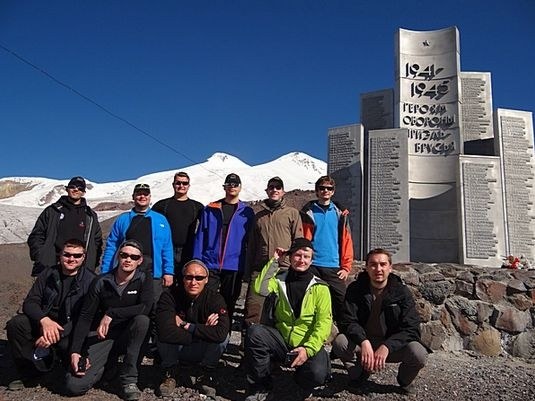All news: 20 September 2012
Alpari-life.ru: ANDREY KHARCHENKO: BECOMING A CLIMBER
Elbrus.
My reasons for making the trip out to Elbrus were fairly simple: to experience something new (climbing), to have the chance to speak with my coworkers in a less formal environment and to enjoy my time off. Looking back, I’d say I did ...
My reasons for making the trip out to Elbrus were fairly simple: to experience something new (climbing), to have the chance to speak with my coworkers in a less formal environment and to enjoy my time off. Looking back, I’d say I did pretty well.
Climbing. Before the trip, I did a ton of research: about Elbrus, about the area, about climbing for professionals and novices. I came to the conclusion that climbing Elbrus would be somewhat analogous to a trip to the store – pretty simple. The travel information I was reading made it sound like it would be a brisk hike; that it wouldn’t require any special physical training.
Things turned out to be completely different from what I had imagined. This was obvious as soon as we began our acclimatization climb to Cheget Peak. At 3,000 meters, breathing is noticeably more difficult and physical burdens become even more difficult to overcome. Even getting to sleep at 2,200 meters during the first couple of nights proved to be a challenge. At 3,800 meters (“The Barrels”), I only managed to get in one night of sound sleep in the three nights we stayed there.
After that, we made an acclimatization climb to the Pastukhova Rocks from camp at The Barrels. The living conditions at the “hotel” there are truly spartan, but it was nice that we had our food prepared for us. A huge “Thank You” goes out to the chefs up there. The acclimatization climb really showed me that our mission would not be easy. Two climbers ended up having to turn back due to health issues.
The Big Day. It was tough, even though we had a snowcat take us all the way up to 4,800 meters. We only had 840 meters left to clear vertically to make the summit, but not everyone there managed to reach the highest point in Europe.
I made it to the saddle, or to 5,300 meters. It took me 5 hours to gain 500 meters in elevation. To get a sense of how tough this is, imagine wearing 5 layers of clothing (yeah, you have to do this). After you put on the outer coat, you’ve puffed up to about one and a half times your normal size. Then you have to put on your backpack (about 3 kilograms) and climbing shoes. Then pretend you’re wearing a gas mask, because it’s a lot more difficult to breathe. Now, spend about 5 hours climbing the stairs in a tall building. And this crude simulation doesn’t even include the frost and the gale-force winds, but you should get the picture.
Now you can ask yourself, “Would I have made the summit or not?” You might have. But for me, the saddle was my summit and I turned around after I reached it.
I really have to give it up for the guys who did manage to reach the summit. It wasn’t easy for any of them. You can see that in the pictures. That they managed to do that – we are all really proud of them!
After the climb, I gained a lot of respect for mountain climbers, especially for high-altitude climbers. These are really strong people. I bet they could overcome virtually any obstacle.
The Good Times. The chance to talk to my coworkers in a less formal setting was really great. They all have a good attitude and are real go-getters. It was nice to find that we all pretty much spoke a common language outside of the workplace. I guess that’s because we bump into each other all the time at work. Now I can say with confidence that we are a real team. I’m sure the trust we built in the mountains will carry over into the workplace.
It was a great trip. I’d like to thank Alpari for giving me the chance to test myself and to experience something new.
Andrey Kharchenko, Team Alpari-Office








